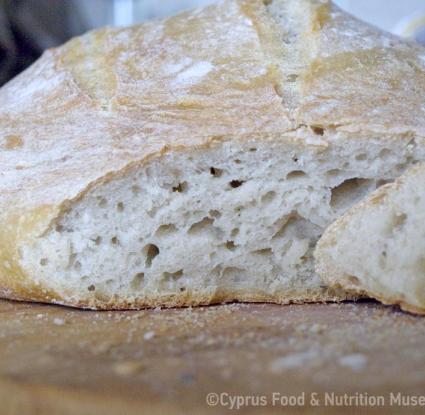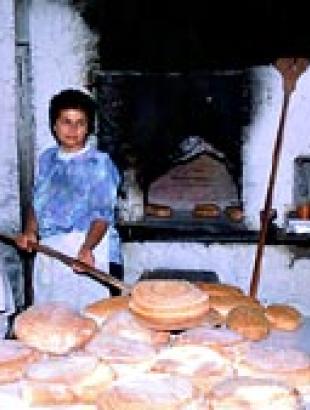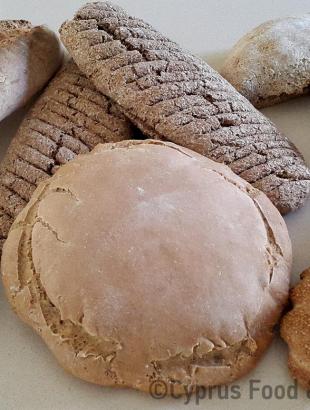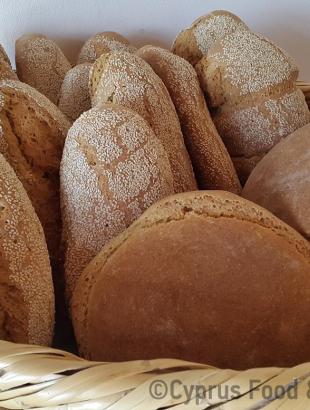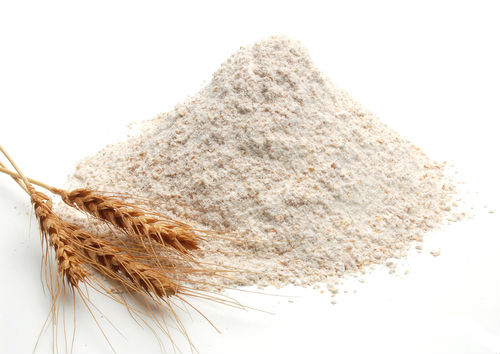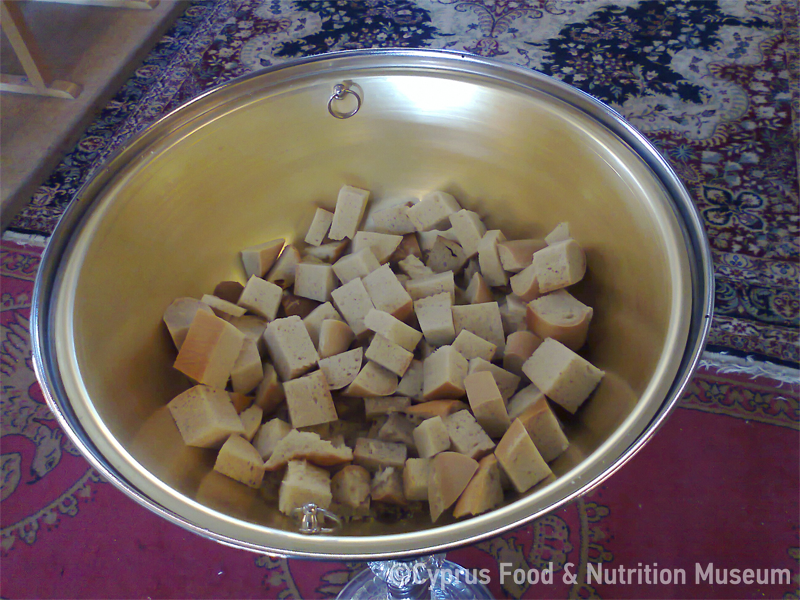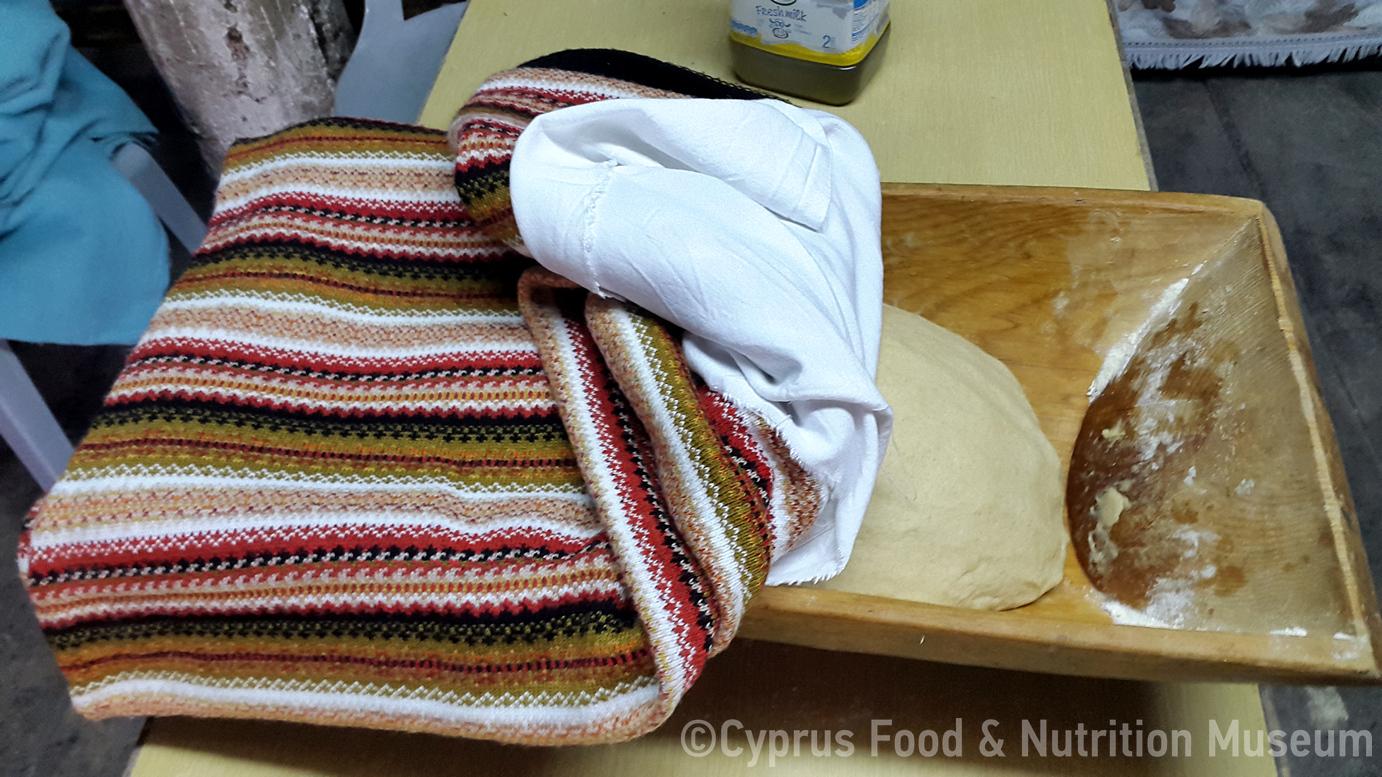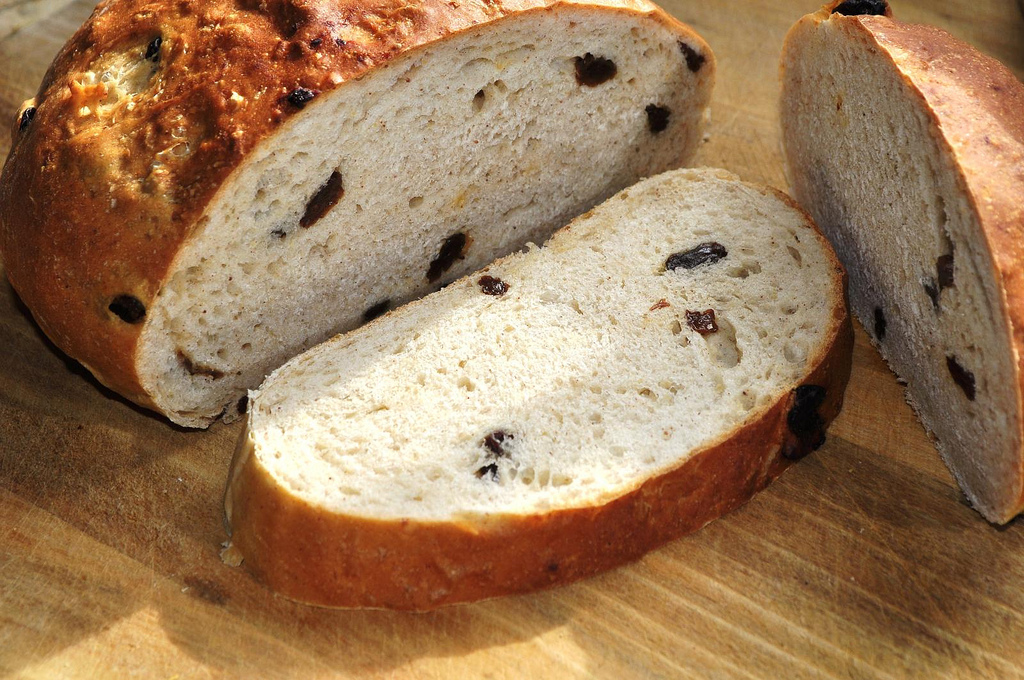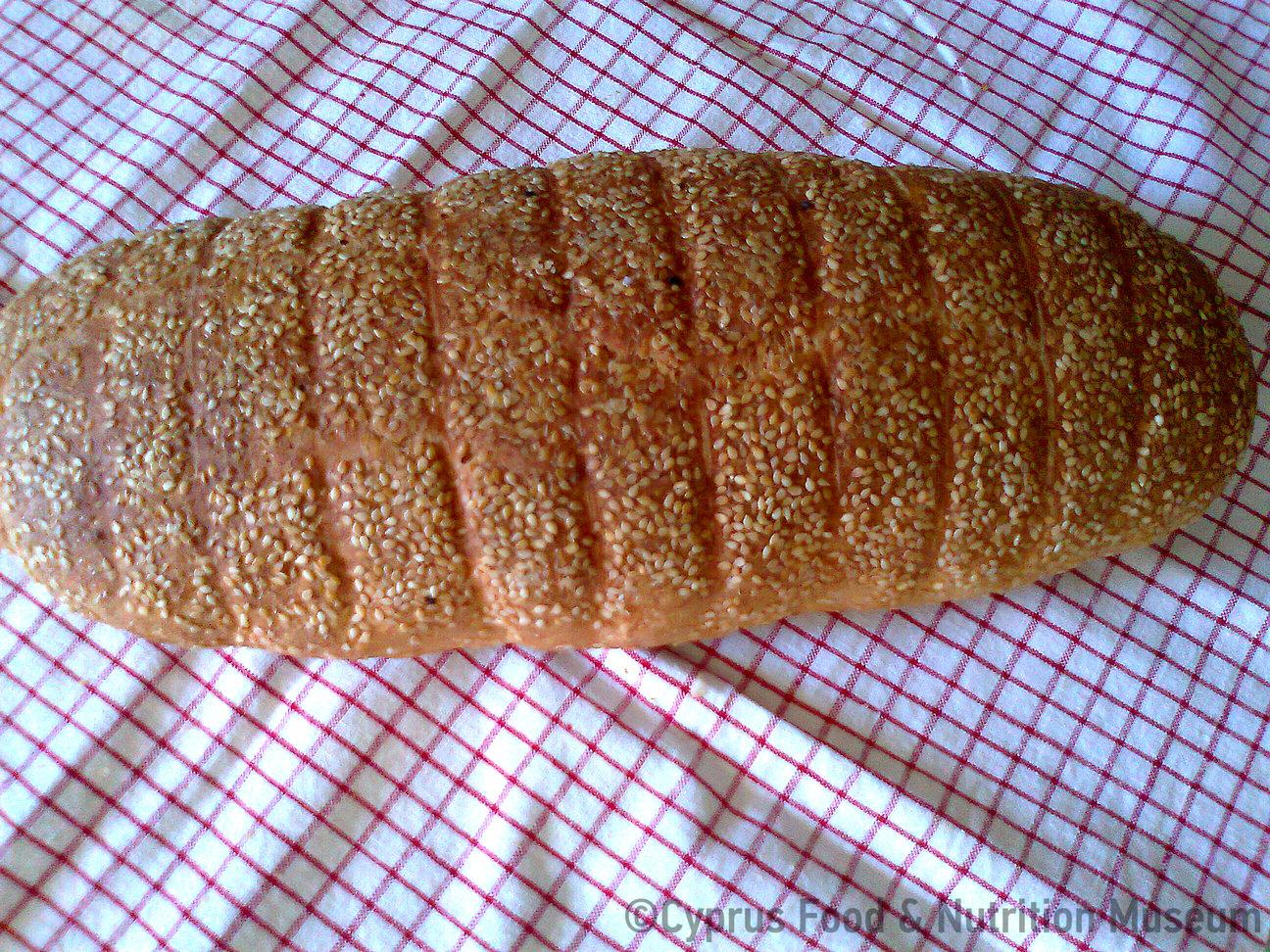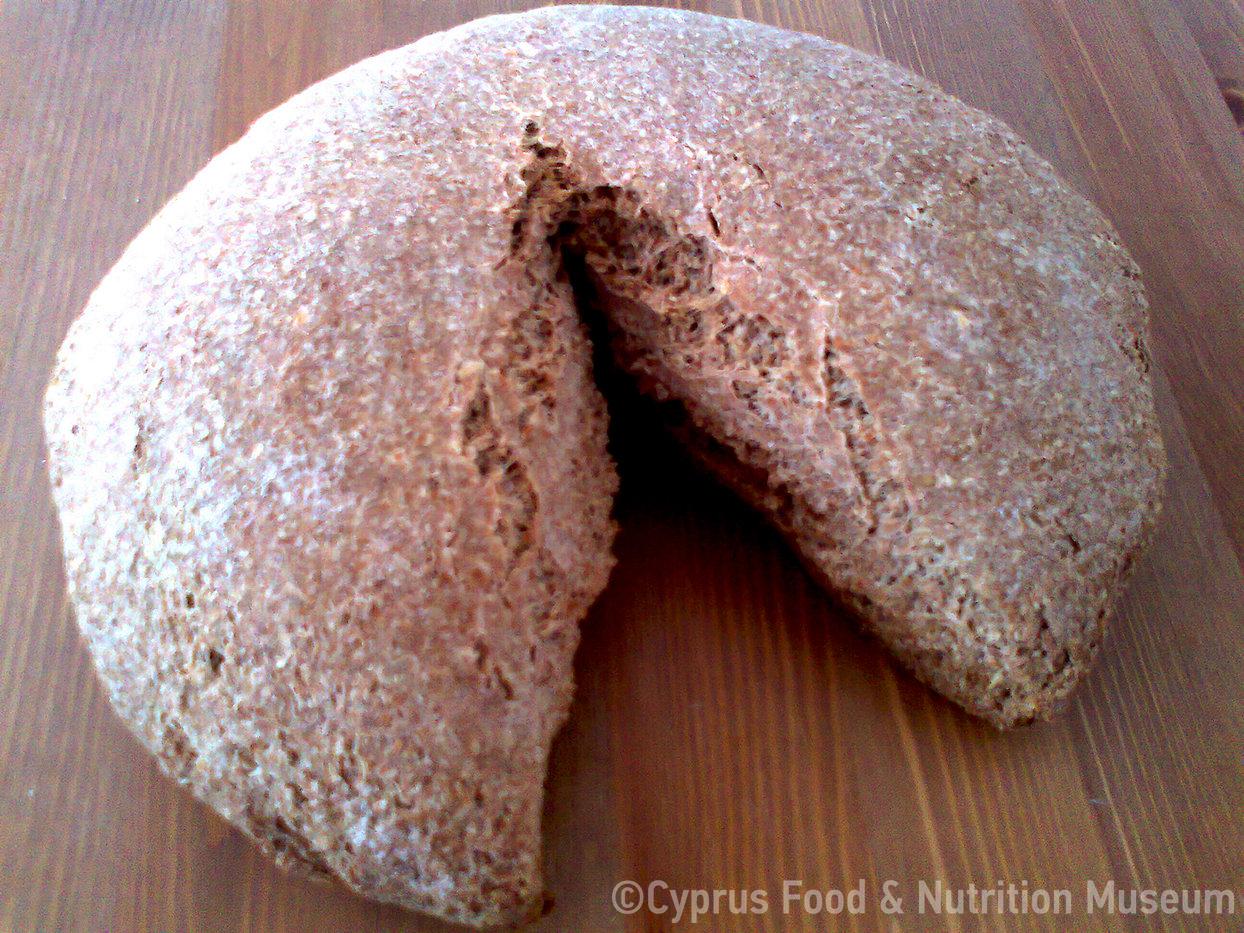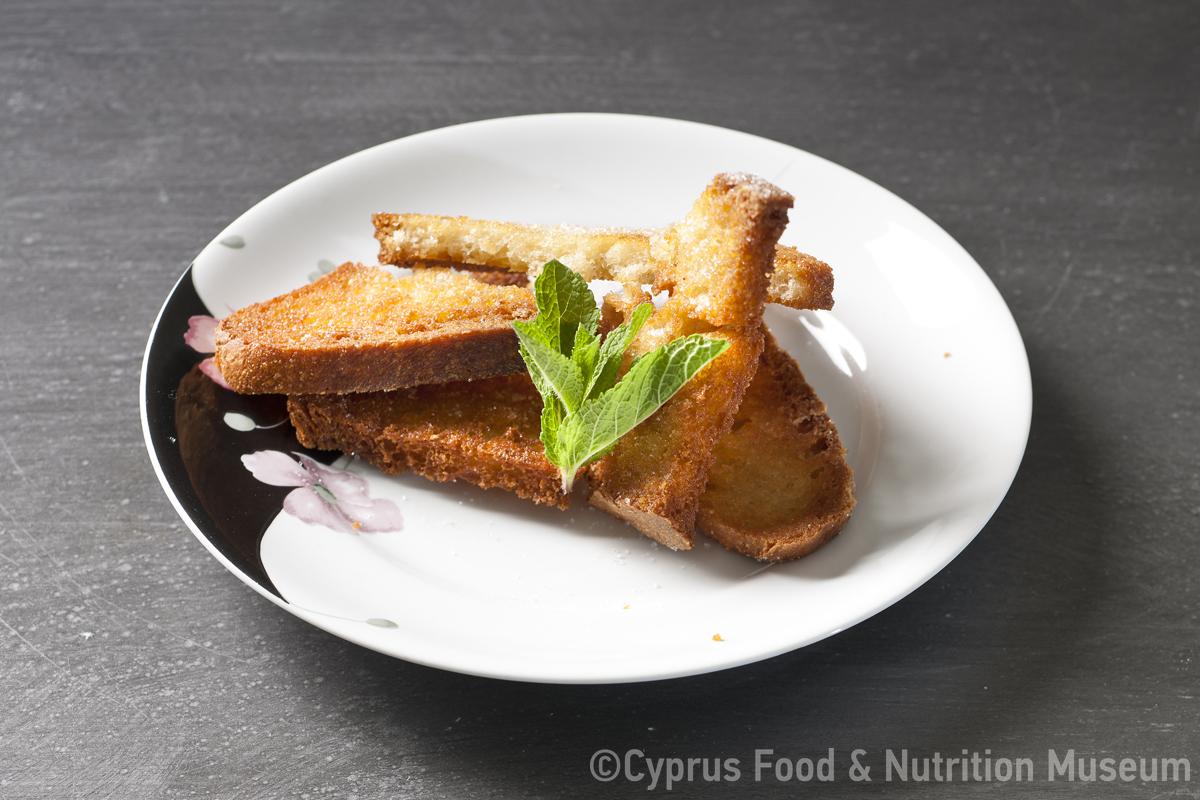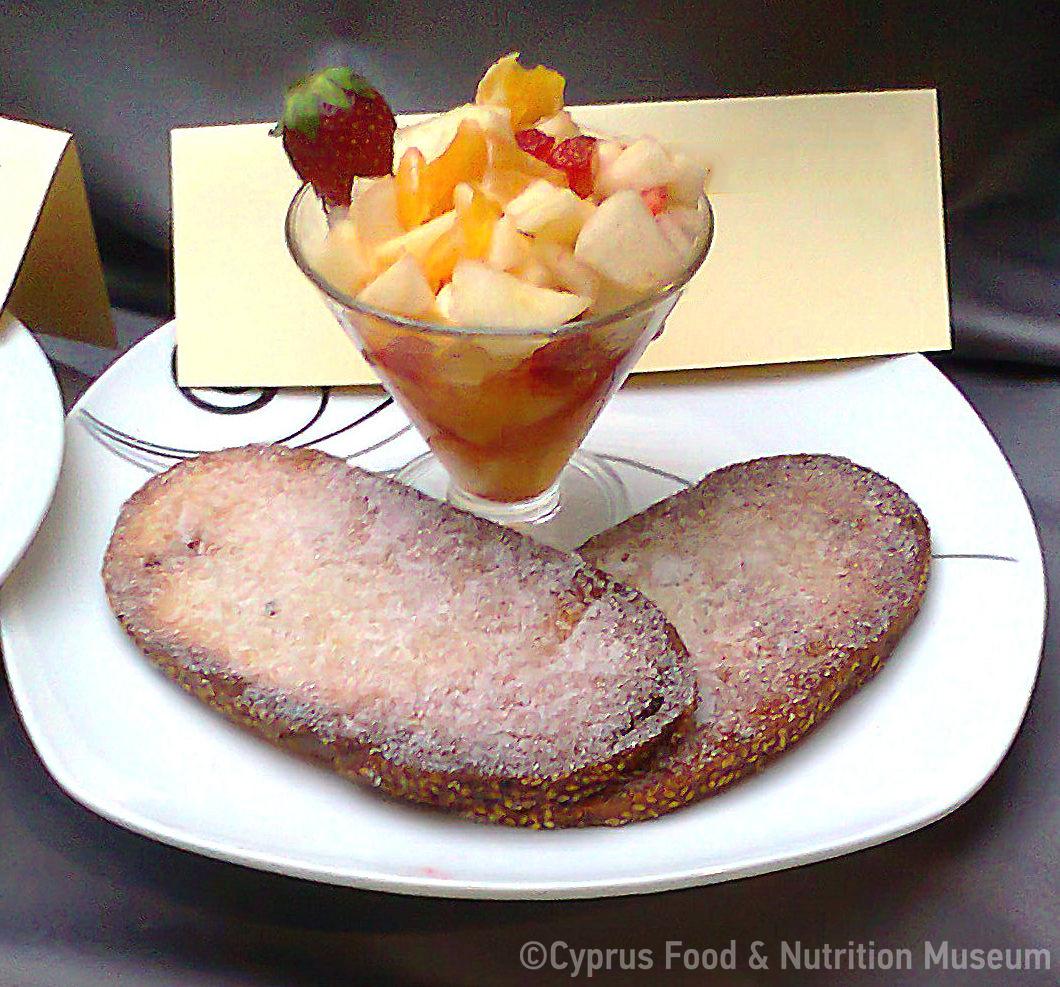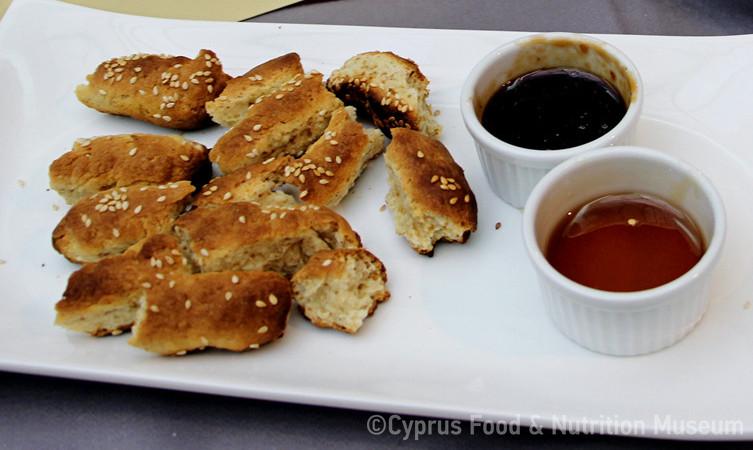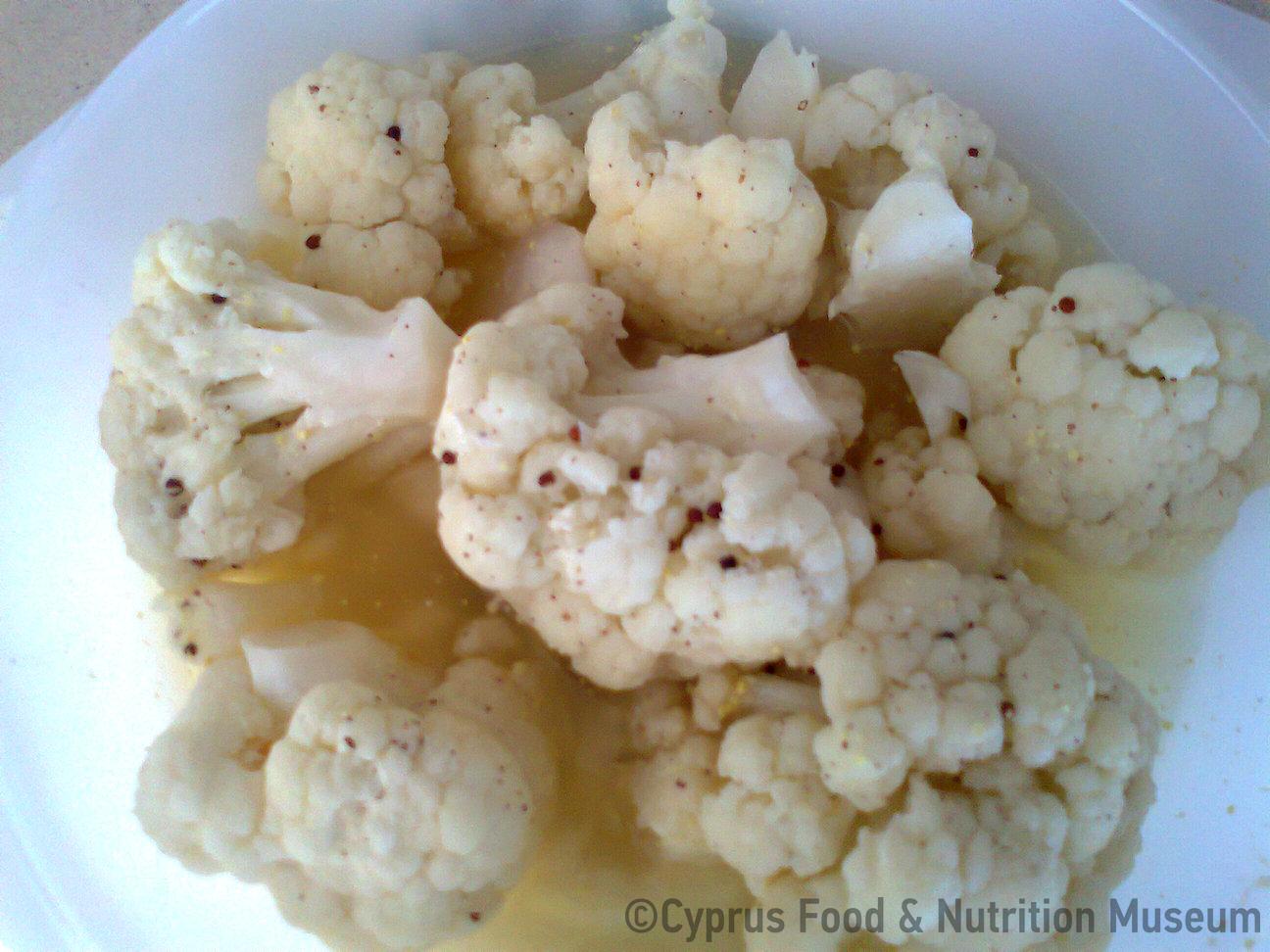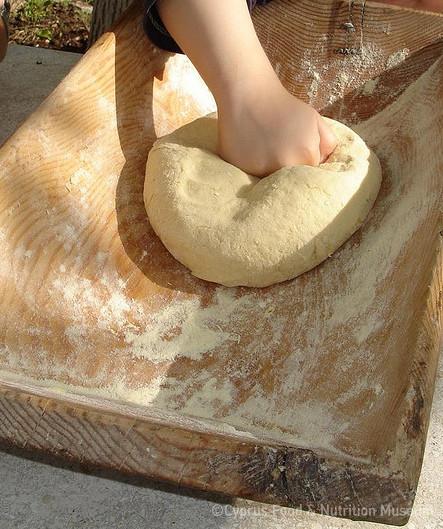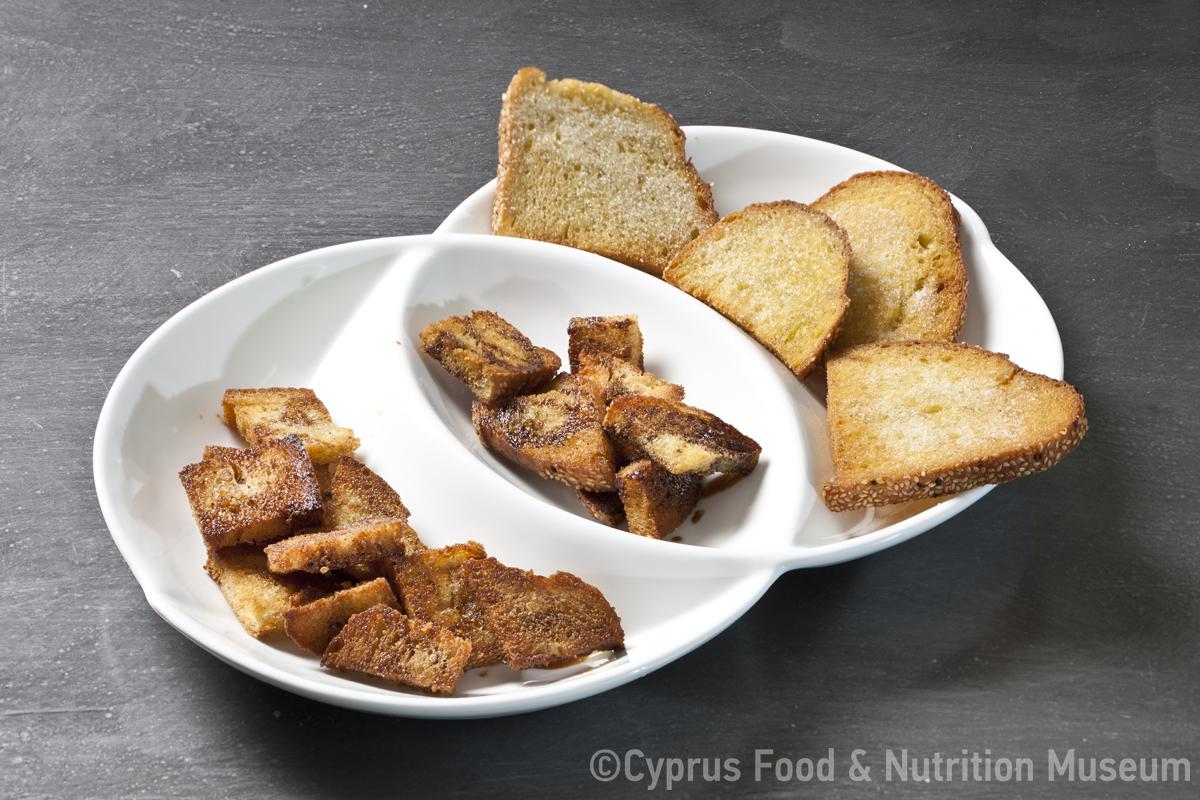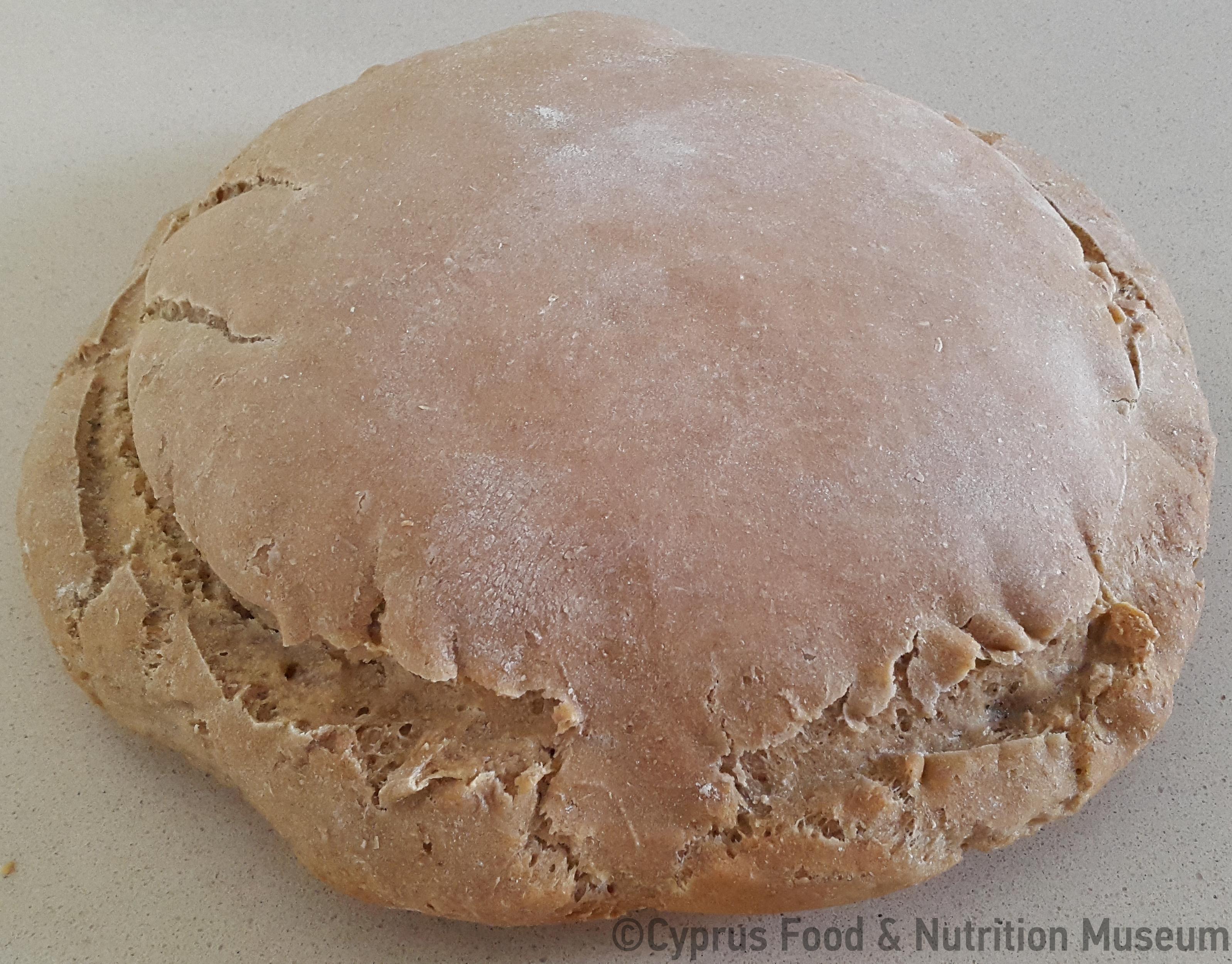The Holy Water from the feast of the Holy Cross (14 September) is used for the preparation of the sourdough starter. The initial starter is formed by combining this holy water and some flour… it is ready to use nine days later. This starter is renewed and used throughout the year to prepare bread and pastries.
Name - Recipe
Ψωμί με προζύμι.
Version A
Water
Flour
Sourdough starter
Salt
Version B
1 kg flour
2 ½ glasses of water
A bit of sourdough starter
Version A
The bread is made with sourdough starter. The starter is made with Holy Water from the feast of the Holy Cross on 14 September. The initial starter is formed by combining this holy water with some flour. It is left covered for 3 days to allow the first fermentation to take place. Then more Holy Water and some flour are added and mixed with the rest of the starter and after 3 days the procedure is repeated. So the starter is ready after nine days. This starter is renewed and used throughout the year to prepare bread and pastries.
By the evening the starter is ready. The starter must be dissolved in a little lukewarm water. Then the starter is mixed with village flour, plain flour (farina), water and a bit of salt, until the dough is ready. The dough is then cut into pieces of about 1 kg each, each of them is rolled in flour and then placed in a traditional wooden board with moulds (koupposanido), which has been lined with a piece of cloth and sprinkled with flour and nigella seeds (aromatic seeds). The loaves are covered with a blanket for about three hours. The traditional oven is already prepared at the appropriate temperature and then the loaves are scored with a blade and placed in the oven using a peel where they will be baking for one hour. The loaves are then removed from the oven with a peel and are ready for consumption. (mari.org.cy/ksenagisi/to-chorio/#toggle-id-5)
Version B
We make the starter from the previous day. We sift the flour into a basin and gather it all on one side. Then, we dissolve the starter in lukewarm water and knead with the flour. We let it proof and then we shape the loaves (one or two). Then we put them in the oven and bake them for about 45 minutes. (Eleni Savva, Kyperounda)
Baking in the oven.
Besides regular bread, the same method is used to prepare brown bread, wholemeal bread, rusks, glistarkes and artos, pannyhides for church festivals and memorial services.
Additional information and bibliography
Mari Community Council. Traditional Arts and Crafts - village bread (web source:mari.org.cy/ksenagisi/to-chorio/#toggle-id-5)
Oral testimonies: Eleni Savva, Kyperounda (see. Kourri, P. and Lazarou, S. (eds.) (2007). Traditional recipes of the village of Kyperounda, unpublished data).
Stalo Lazarou

